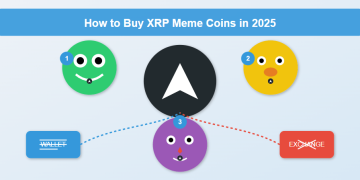Solar Panel Recycling: Closing the Loop on Clean Energy
Solar power is one of the fastest-growing renewable energy sources in the world. With millions of solar panels installed globally on homes, businesses, and solar farms, the push toward a greener, low-carbon future is gaining momentum. But as solar panels reach the end of their 25–30 year lifespan, a new challenge emerges: what happens to them after they stop producing electricity?
Enter solar panel recycling—a crucial yet often overlooked component of sustainable energy systems.
Why Solar Panel Recycling Matters
While solar energy itself is clean and renewable, the materials used to make solar panels—glass, silicon, aluminum, and small amounts of rare metals—can create a waste problem if not disposed of properly. According to the International Renewable Energy Agency (IRENA), solar panel waste could total over 78 million tons globally by 2050 if left unmanaged.
Without a recycling strategy in place, this waste could end up in landfills, squandering valuable materials and risking environmental contamination.
What Are Solar Panels Made Of?
To understand how solar panel recycling works, it’s helpful to know what panels are made of. Most standard panels (especially silicon-based ones) contain:
- Glass (up to 75% of the panel)
- Aluminum frame
- Silicon solar cells
- Plastic backsheet and encapsulant layers
- Small quantities of silver, copper, lead, and other metals
Much of this material is recoverable—if recycled properly.
How Solar Panel Recycling Works
Solar panel recycling typically involves several stages:
1. Collection and Transport
Panels are collected from homes, businesses, or solar farms and transported to recycling facilities.
2. Disassembly
Frames and junction boxes are removed. Aluminum frames are recyclable and are often reused in other manufacturing processes.
3. Material Separation
The panel’s glass, silicon, and plastic layers are separated using thermal, mechanical, or chemical processes. The glass can be recovered for use in new panels or other products, while the silicon can often be purified and reused in new solar cells.
4. Metal Recovery
Metals like copper and silver are extracted and sent back into the production cycle. These materials are especially valuable and support the economics of recycling.
Benefits of Solar Panel Recycling
- Resource Conservation: Recovering valuable materials reduces the need for raw resource extraction.
- Waste Reduction: Prevents old panels from ending up in landfills, where toxic materials could leach into the environment.
- Job Creation: As the solar industry grows, so does the demand for specialized recycling services and infrastructure.
- Circular Economy: Recycling supports a circular economy, where materials are kept in use for as long as possible.
The Challenges Ahead
Despite its benefits, solar panel recycling is still in its early stages in many parts of the world. Challenges include:
- Lack of infrastructure: Few specialized facilities exist globally.
- High processing costs: Recycling processes can be more expensive than landfilling.
- Regulatory gaps: Inconsistent policies can limit incentives for proper disposal and recycling.
Governments and industries are beginning to respond by setting recycling mandates, funding R&D, and building more facilities. The EU, for instance, includes solar panels in its Waste Electrical and Electronic Equipment (WEEE) Directive, requiring proper end-of-life treatment.
Looking to the Future
With solar installations continuing to soar, recycling must become a standard part of the clean energy lifecycle. Innovations in panel design are also emerging, including panels that are easier to dismantle and reuse. Building out recycling infrastructure now will help the solar industry remain sustainable and resilient for generations to come.
Final Thoughts
Solar panel recycling is a critical step in making solar power truly sustainable. As more panels reach the end of their lifespan, we must prepare to manage them responsibly—recovering valuable resources, protecting the environment, and reinforcing the long-term viability of clean energy.
By investing in solar panel recycling today, we protect the promise of a cleaner tomorrow.










